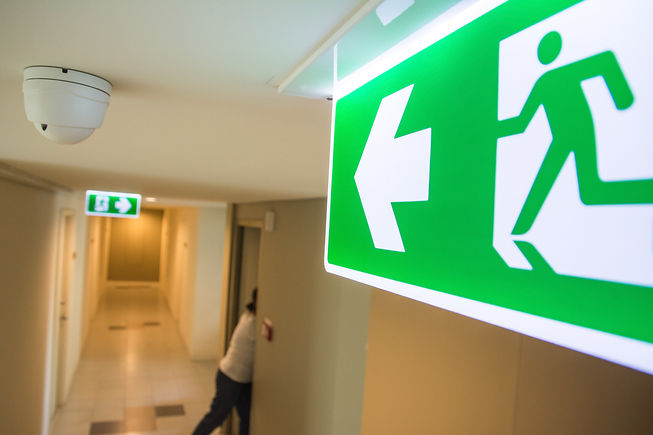
Transportation Routes
Not only do we have to pack extra items to complete our emergency bags and organize our families during emergency events, but we must also figure a way out of our dangerous environment. Planning an escape route is stressful, especially if extreme weather makes it nearly impossible to navigate your cities, e.g. blocked roads or fallen buildings. Thankfully, the DOT (Department of Transportation) will post information and updates related to public transportation during such event. Plan ahead of the DOT by familiarizing yourself with your workplace, school, and neighborhood.
Neighborhood/Home:
During an evacuation, it is your responsibility to identify ways to enter and exit your house or apartment. Distinguish at least two ways to do so. It may also be helpful to connect with your neighbors in case of emergencies to establish a plan together, e.g. consolidating emergency equipment or medical knowledge, checking in on the young, elderly, disabled, etc.
Steps to Prepare:
-
Inspire your kids (and other family members) to actively plan and practice drills with you. This will help them remember during emergencies. Take them shopping when you prepare emergency/preparedness kits and ensure they know how to utilize everything inside it. (Can openers, cell phones, maps, water filters, etc.)
-
Create easy-to-dial ICE (In Case of Emergency) contacts on your child’s phone. Also, save out-of-town contacts onto all phones because phone lines will become busy, and it might be easier to make long-distance phone calls.
-
Solidify key information in case connectivity is lost, such as where to meet.
School:
Experiencing an emergency event during school is frightening for many students. Luckily, there are procedures that will allow district faculty and staff to access the danger and coordinate a plan to keep everyone safe; which may or may not include evacuating onto a separate site. To execute a successful evacuation, young students must adhere to all safety protocols and cooperate with each other. One way to prepare your younger children is to talk to them about potential dangers.
Preparedness for older students:
-
Sign up for campus alerts.
-
Follow your school’s social media accounts for updates.
-
Keep a small first aid kit with you and a preparedness kit in your car.
-
Save your teachers’ contact information.
Workplace:
Unexpected disasters may strike during inconvenient moments, such as work hours. Your workplace should already have an emergency evacuation plan but if you are not familiar with it, please inquire.
How to prepare your workplace:
-
Determine what is absolutely necessary for your company to operate, including payroll.
-
Designate extra roles/responsibilities in case of an emergency event.
-
Note any medical conditions and keep updated contact information of staff in emergency kits.
-
Secure First Aid and Preparedness Kits somewhere easily accessible around the workplace.
-
Follow all emergency protocols as they arise.
For more information about workplace safety and evacuations, click here:





